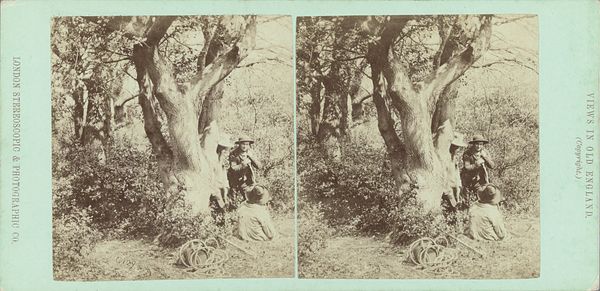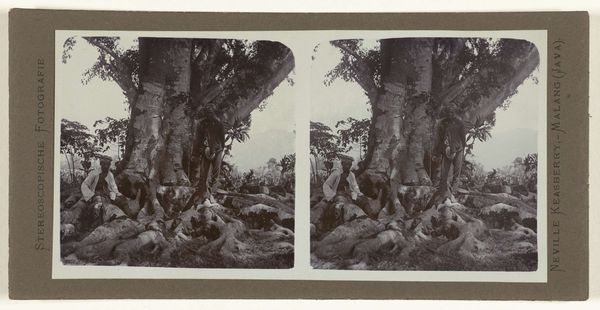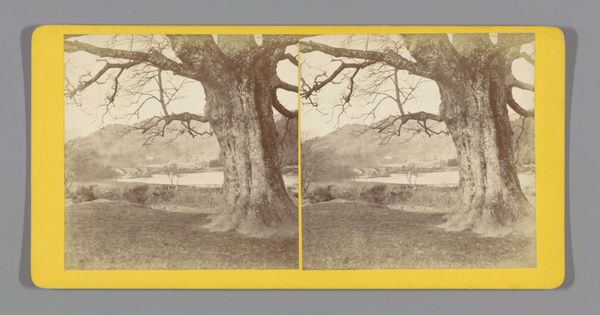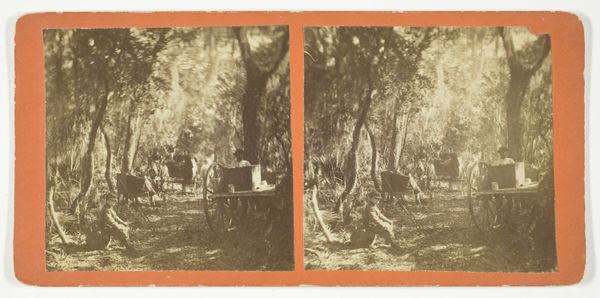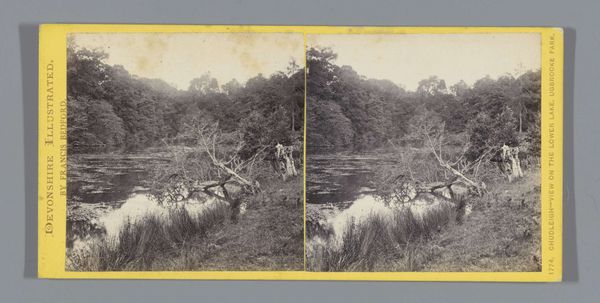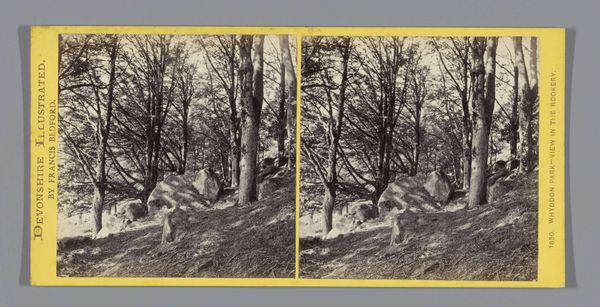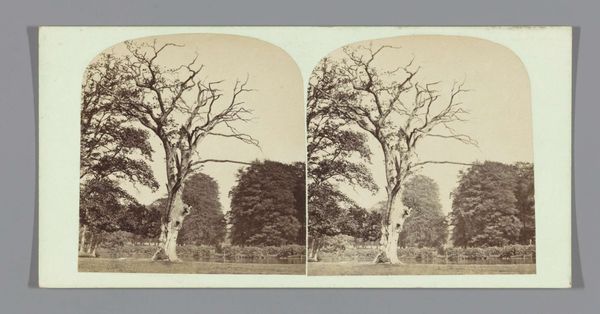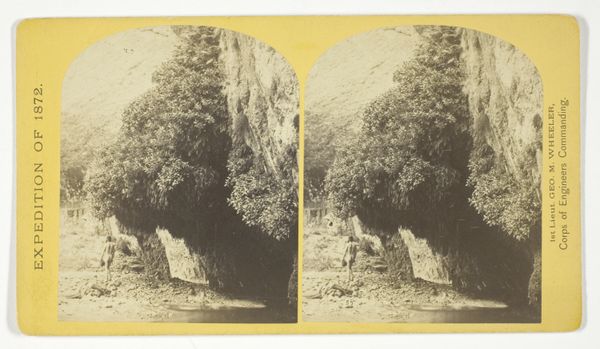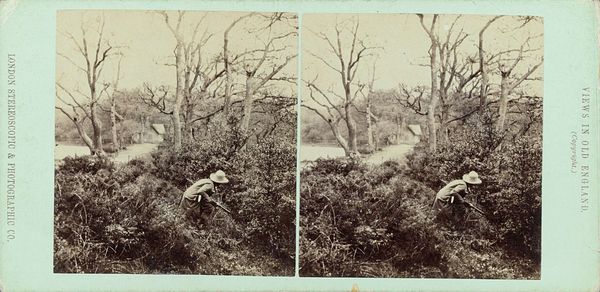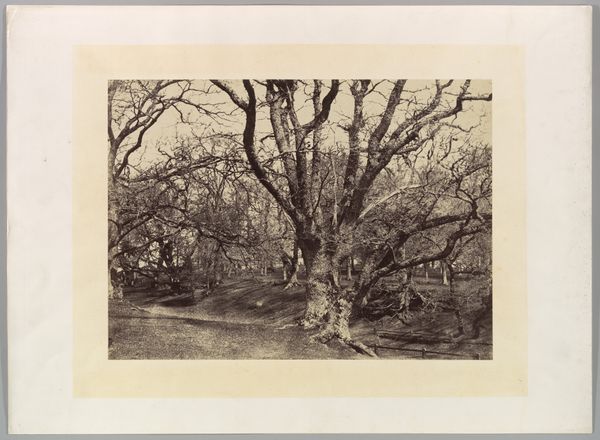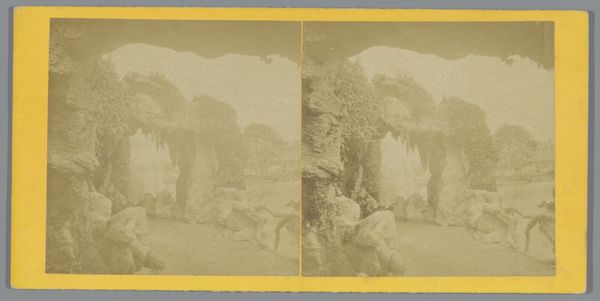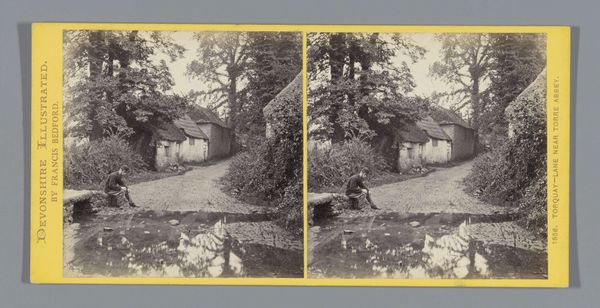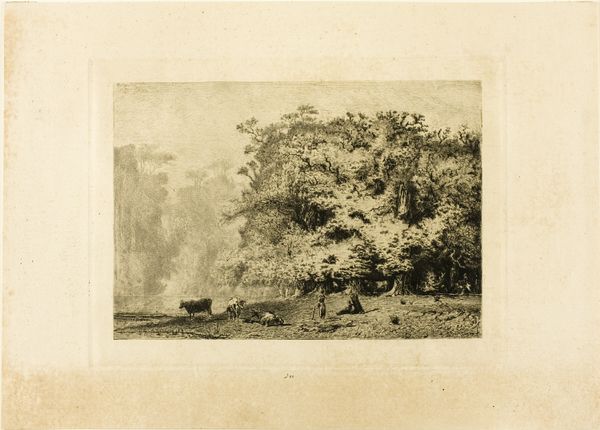
Man met geweer en groep kinderen rustend onder een boom in Engeland c. 1860 - 1880
0:00
0:00
Dimensions: height 83 mm, width 172 mm
Copyright: Rijks Museum: Open Domain
Editor: This stereoscopic photograph, "Man met geweer en groep kinderen rustend onder een boom in Engeland," by the London Stereoscopic Company, was probably taken between 1860 and 1880. It's giving me a very staged, almost theatrical feeling. What catches your eye? How would you approach analysing its aesthetic properties? Curator: The compositional structure relies heavily on the triangular shape formed by the tree’s trunk and its sprawling branches. This is mirrored, almost inverted, by the arrangement of the figures at its base, creating a formal symmetry. Notice how the monochromatic palette and sharp contrasts emphasize texture. The materiality of the print itself, the paper and the specific tonal range achieved, significantly contributes to the aesthetic impact. The lines formed by the rifles act as visual punctuations, disrupting what would otherwise be a purely pastoral scene. Don't you agree? Editor: Yes, I see that interplay of geometric forms and the use of stark contrast. Does that contribute to the overall mood of the photograph, and what kind of reading of this composition can we offer? Curator: Indeed. The high contrast heightens the sense of drama within the otherwise peaceful setting. It suggests an underlying tension between leisure and labour, between childhood innocence and the presence of armed authority. From a formalist point of view, it is vital that the semantic interpretation derives directly from the work itself. For example, what do we make of the deliberate arrangement of subjects in what appears to be an otherwise documentary genre? Editor: The composition seems carefully orchestrated, so that would certainly steer us away from a spontaneous snapshot interpretation. Curator: Precisely. The very rigidity of the composition seems to draw the viewer's attention toward this subtle disquiet between control and casual repose. It raises questions regarding intention versus reality within photographic representation of this time. Editor: This has been incredibly enlightening, thinking about this in terms of purely visual structures and compositional tensions. Curator: My pleasure. It illustrates the potential of close visual analysis in unpacking complex aesthetic relationships.
Comments
No comments
Be the first to comment and join the conversation on the ultimate creative platform.
